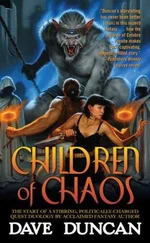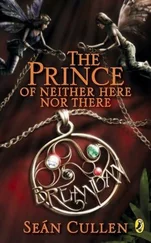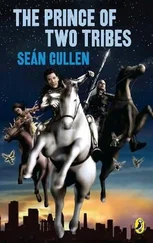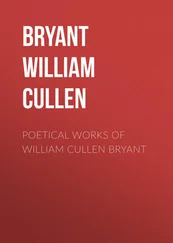A guy walked into the crowded cafeteria. “Fuck you!” one of Eric’s buddies spat, well out of hearing range. “I hate that putrid cock!” Another friend agreed. Eric turned slowly and gazed over his shoulder with his trademark detachment. He studied the guy and turned back with less interest than he had shown toward the phone. “I hate almost everyone,” he replied blankly. “Ah, yes. I wanna rip his head off and eat it.”
Eric’s voice was flat. No malice, no anger, barely interested. His eyebrows rose at the Ah, yes —a mild congratulation for the clever line about to come. He went vacant again delivering it.
No one found that reaction unusual. They were used to Eric.
They moved on to reminiscing about a freshman they’d picked on. Eric impersonated a special ed kid struggling to talk. A busty girl walked by. Eric waved her over and they hit on her.
3. Springtime

Spring had burst upon the Front Range. Trees were leafing, anthills rising, lawns growing vibrant in their brief transition from dormant winter brown to parched summer brown. Millions of mini-propeller maple seedpods twirled down toward the ground. Spring fever infected the classrooms. Teachers zipped through remaining chapters; kids started to stress about finals and daydream about the summer. Seniors looked ahead to fall. Columbine had one of the best academic reputations in the state; 80 percent of graduates headed on to degree programs. College dominated the conversation now: big fat acceptance packets and paper-thin rejection envelopes; last-minute campus visits to narrow down the finalists. It was time to commit to a university, write the deposit check, and start selecting first-semester classes. High school was essentially over.
Up in the Rockies, it was still winter. The slopes were open but the snow was receding. Kids begged their parents for a day off from school for one last boarding run. An Evangelical Christian junior talked her parents into letting her go the day before Mr. D’s assembly. Cassie Bernall drove up to Breckenridge with her brother, Chris. Neither one had met Eric or Dylan yet.
Lunchtime was still a big daily event. The Columbine cafeteria was a wideopen bubble of a space protruding from the spacious corridor between the student entrance at the south corner and the giant stone staircase that could fit more than a dozen students across. Kids referred to the area as “the commons.” It was wrapped with an open latticework facade of white steel girders and awnings and a decorative crisscross of steel cables. Inside, a hive of activity ignited at lunchtime. At the start of “A” lunch, more than six hundred students rushed in. Some came and went quickly, using it as a central meeting hub or grabbing a pack of Tater Tots for the road. It was packed solid for five minutes, then emptied out quickly. Three to four hundred kids eventually settled in for the duration, in plastic chairs around movable tables seating six to eight.
Two hours after the assembly, Mr. D was on lunch duty—his favorite part of the day. Most administrators delegated the task, but Principal DeAngelis could not get enough. “My friends laugh at me,” he said. “Lunch duty! Ugh! But I love it down there. That’s when you get to see the kids. That’s when you get to talk to them.”
Mr. D made his way around the commons, chatting up kids at each table, pausing as eager students ran up to catch his ear. He was down here for the start of “A” lunch nearly every day. His visits were lighthearted and conversational. He listened to his students’ stories and helped solve problems, but he avoided discipline at lunch. The one situation where he just couldn’t stop himself, though, was when he saw abandoned trays and food scraps. The Columbine Mr. D had inherited was short on frills, but he insisted it stay clean.
He was so irritated by entitlement and sloppiness that he’d had four surveillance cameras installed in the commons. A custodian loaded a fresh tape every morning around 11:05, and the rotating cameras continually swept the commons, recording fifteen-second bursts of action automatically cut from camera to camera. Day after day, they recorded the most banal footage imaginable. No one could have imagined what those cameras would capture just four months after installation.
____
A terrifying affliction had infested America’s small towns and suburbs: the school shooter. We knew it because we had seen it on TV. We had read about it in the newspapers. It had materialized inexplicably two years before. In February 1997, a sixteen-year-old in remote Bethel, Alaska, brought a shotgun to high school and opened fire. He killed the principal and a student and injured two others. In October, another boy shot up his school, this time in Pearl, Mississippi. Two dead students, seven wounded. Two more sprees erupted in December, in remote locales: West Paducah, Kentucky, and Stamps, Arkansas. Seven were dead by the end of the year, sixteen wounded.
The following year was worse: ten dead, thirty-five wounded, in five separate incidents. The violence intensified in the springtime, as the school year came to a close. Shooting season, they began to call it. The perpetrator was always a white boy, always a teenager, in a placid town few had ever heard of. Most of the shooters acted alone. Each attack erupted unexpectedly and ended quickly, so TV never caught the turmoil. The nation watched the aftermaths: endless scenes of schools surrounded by ambulances, overrun by cops, hemorrhaging terrified children.
By graduation day, 1998, it felt like a full-blown epidemic. With each escalation, small towns and suburbia grew a little more tense. City schools had been armed camps for ages, but the suburbs were supposed to be safe.
The public was riveted; the panic was real. But was it warranted? It could happen anyplace became the refrain. “But it doesn’t happen anyplace,” Justice Policy Institute director Vincent Schiraldi argued in the Washington Post. “And it rarely happens at all.” A New York Times editorial made the same point. CDC data pegged a child’s chances of dying at school at one in a million. And holding. The “trend” was actually steady to downward, depending on how far back you looked.
But it was new to middle-class white parents. Each fresh horror left millions shaking their heads, wondering when the next outcast would strike.
And then… nothing. During the entire 1998-99 school year, not a single shooter emerged. The threat faded, and a distant struggle took hold of the news. The slow disintegration of Yugoslavia erupted again. In March 1999, as Eric and Dylan finalized their plans, NATO drew the line on Serbian aggression in a place called Kosovo. The United States began its largest air campaign since Vietnam. Swarms of F-15 squadrons pounded Belgrade. Central Europe was in chaos; America was at war. The suburban menace of the school shooter had receded.
4. Rock’n’ Bowl

Eric and Dylan had “A” lunch, but they were rarely around for Mr. D’s visits anymore. Columbine was an open campus, so older kids with licenses and cars mostly took off for Subway, Wendy’s, or countless drive-thrus scattered about the subdivisions. Most of the Columbine parents were affluent enough to endow their kids with cars. Eric had a black Honda Prelude. Dylan drove a vintage BMW his dad had refurbished. The two cars sat side by side in their assigned spaces in the senior lot every day. At lunch the boys loaded into one with a handful of friends to grab a bite and a smoke.
Читать дальше








